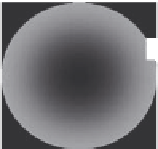Environmental Engineering Reference
In-Depth Information
figure 4.40 A float-and-thermostatic trap.
back up into the steam space, and the equipment cannot produce the
intended heat. Consider, as an example, a four-coil dryer with only three
of the coils operating. In this setup, it will take longer for the dryer to
dry a product, which has a negative effect on production.
Note:
Most traps will operate with backpressure, but they do so only at
a percentage of their rating, affecting everything down the line of the
failed trap. Steam quality and product can be affected.
4.14.4.1.1 Trap maintenance
Excluding design problems, two of the most common causes of
trap failure are oversizing and dirt. Oversizing causes the traps to work
too ha rd. In some cases, t his ca in result in blowing of live stea m. Cer t a in
trap types, for example, can lose their prime due to an abrupt change in
pressure. This will cause the valve to open. Traps tend to accumulate
dirt (sludge) that prevents tight closing. The moving parts of the traps
are subject to wear. Because the moving parts of traps operate in a mix-
ture of steam and water, or sometimes in a mixture of compressed air
and water, they are difficult to lubricate. Trap maintenance includes
p er io d ic cle a n i n g, r emov i n g d i r t t h at i nt er fer es w it h v a lve act ion, adjust-
ing the mechanical linkage between moving parts and valves, and
reseating the valves when necessary. If
these steps are not taken, the trap will not
operate properly.
Key Point:
Dirt (sludge) is generally produced
from pipe scale or from overtreatment of
chemicals in a boiler.














































































